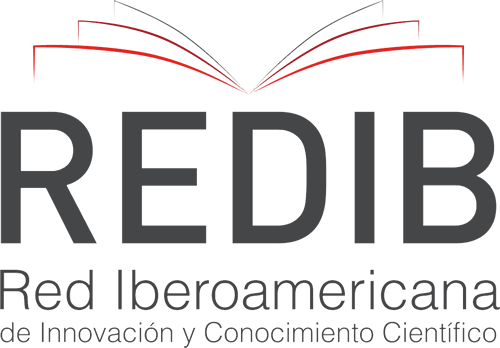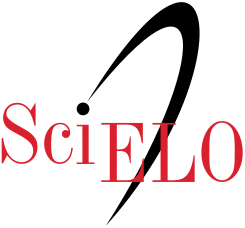De la televisión a TikTok: Nuevos formatos audiovisuales para comunicar ciencia
DOI:
https://doi.org/10.32870/cys.v2023.8441Palabras clave:
Narrativas transmedia, Audiovisual, Periodismo científico, Redes sociales, TikTokResumen
Este artículo da a conocer la forma en que diez programas informativos de televisión utilizan TikTok para difundir noticias de ciencia, analizando cómo aplican el lenguaje propio que tiene la plataforma. Mediante la aplicación de una checklist de evaluación, se analiza la adaptación del contenido televisivo y se valoran las oportunidades audiovisuales de esta red social. Los resultados evidencian que los vídeos cortos producen una mayor interacción con los usuarios y que los perfiles de canales de noticias no están aprovechando las particularidades de TikTok.Descargas
Citas
Ali, M. S. (2014). Television as a Medium of Science Communication. En L. Wee Hin & R. Subramaniam (Eds.), Communicating Science to the Public. Opportunities and Challenges for the Asia-Pacific Region (pp. 277–292). Springer. https://doi.org/10.1007/978-94-017-9097-0_17
Basch, C. H., Mohlman, J., Fera, J., Tang, H., Pellicane, A. & Basch, C. E. (2021). Community mitigation of covid-19 and portrayal of testing on tiktok: Descriptive study. JMIR Public Health and Surveillance, 7(6), 1–7. https://doi.org/10.2196/29528
Blanco, S. & Palomo, B. (2021). Journalistic rigor and consistency the keys to the success of Spanish journalists on YouTube. Estudios sobre el Mensaje Periodístico, 27(4), 1043–1051. https://doi.org/10.5209/esmp.78143
Boy, B., Bucher, H. J. & Christ, K. (2020). Audiovisual Science Communication on TV and YouTube. How Recipients Understand and Evaluate Science Videos. Frontiers in Communication, 5(December), 1–18. https://doi.org/10.3389/fcomm.2020.608620
Cervi, L. (2021). Tik Tok and generation Z. Theatre, Dance and Performance Training, 12(2), 198–204. https://doi.org/10.1080/19443927.2021.1915617
Chobanyan, K. & Nikolskaya, E. (2021). Testing the waters: Tiktok’s potential for television news. World of Media, 2021(3), 62–88. https://doi.org/10.30547/worldofmedia.3.2021.3
Codina, L. (2020). How to do traditional or systematic bibliographic reviews using academic databases. Revista ORL, 11(2), 139. https://doi.org/10.14201/orl.22977
Costa-Sánchez, C., Rodríguez-Vázquez, A. I. & López-García, X. (2015). From transmedia to repurposing journalism. Elpais.com press coverage about case of ebola in Spain. Profesional de la Información, 24(3), 282–290. https://doi.org/10.3145/epi.2015.may.08
Costa-Sánchez, C. & Túñez-López, M. (2019). Audiovisual Content in Social Media. A Comparative Analysis of Facebook and Youtube. Fonseca, Journal of Communication, (19), 223–236. https://doi.org/10.14201/fjc201919223236
Davies, S. R., Franks, S., Roche, J., Schmidt, A. L., Wells, R. & Zollo, F. (2021). The landscape of European science communication. Journal of Science Communication, 20(03), A01. https://doi.org/10.22323/2.20030201
Eizmendi-Iraola, M. & Peña-Fernández, S. (2021). Disappeared or hidden? Analysing the presence of social sciences and humanities in online versions of The Guardian, El País and Público. European Public & Social Innovation Review, 6(1), 56–69. https://doi.org/10.31637/epsir.21-1.5
Fernández-de-Arroyabe-Olaortua, A., Lazkano-Arrillaga, I. & Eguskiza-Sesumaga, L. (2018). Digital natives: Online audiovisual content consumption, creation and dissemination. Comunicar, 26(57), 61–69. https://doi.org/10.3916/C57-2018-06
Guo, P. J., Kim, J. & Rubin, R. (2014). How Video Production Affects Student Engagement: An Empirical Study of MOOC Videos. Proceedings of the first ACM conference on Learning @ scale conference (L@S ’14), 41–50. https://doi.org/10.1145/2556325.2566239
Hayes, C., Stott, K., Lamb, K. J. & Hurst, G. A. (2020). “Making Every Second Count”: Utilizing TikTok and Systems Thinking to Facilitate Scientific Public Engagement and Contextualization of Chemistry at Home. Journal of Chemical Education, 97(10), 3858–3866. https://doi.org/10.1021/acs.jchemed.0c00511
Hut, R., Land-Zandstra, A. M., Smeets, I. & Stoof, C. R. (2016). Geoscience on television: A review of science communication literature in the context of geosciences. Hydrology and Earth System Sciences, 20(6), 2507–2518. https://doi.org/10.5194/hess-20-2507-2016
Impey, C., Wenger, M., Austin, C., Calahan, J. & Danehy, A. (2018). Videos for Astronomy Education and Outreach. Capjournal, (24), 32–39. https://www.capjournal.org/issues/24/24_32.pdf
Jaki, S. (2018). Terms in popular science communication: The case of TV documentaries. Hermes. Journal of Language and Communication in Business, (58), 257–272. https://doi.org/10.7146/hjlcb.v0i58.111689
Kaye, D. B. V., Chen, X. & Zeng, J. (2021). The co-evolution of two Chinese mobile short video apps: Parallel platformization of Douyin and TikTok. Mobile Media and Communication, 9(2), 229–253. https://doi.org/10.1177/2050157920952120
Kippes, R. (2021). The video-article as a key narrative resource for science communication in new digital environments. Jcom América Latina, 04(01), 6. https://doi.org/10.22323/3.04010206
Lewis, S. C. & Molyneux, L. (2018). A decade of research on social media and journalism: Assumptions, blind spots, and a way forward. Media and Communication, 6(4), 11–23. https://doi.org/10.17645/mac.v6i4.1562
Li, Y., Guan, M., Hammond, P. & Berrey, L. E. (2021). Communicating covid-19 information on TikTok: A content analysis of TikTok videos from official accounts featured in the covid-19 information hub. Health Education Research, 36(3), 261–271. https://doi.org/10.1093/her/cyab010
López Aguilar, J. L. (2018). YouTube like tool for the construction of the society of the knowledge. ReHuso: Revista de ciencias humanísticas y sociales, 3(1), 1–16. https://doi.org/10.33936/rehuso.v3i1.1225
MacKinnon, K. R., Kia, H. & Lacombe-Duncan, A. (2021). Examining TikTok’s Potential for Community-Engaged Digital Knowledge Mobilization with Equity-Seeking Groups. Journal of Medical Internet Research, 23(12). https://doi.org/10.2196/30315
Martin-Neira, J.-I., Trillo-Domínguez, M. & Olvera-Lobo, M.-D. (2022a). Digital journalism and transmedia narratives in the communication of science: From disruption to reinvention. En R. Pettinger, B. B. Gupta, A. Roja, & D. Cozmiuc (Eds.), Handbook of Research on Digital Transformation Management and Tools (pp. 531–555). igi Global. https://doi.org/10.4018/978-1-7998-9764-4.ch024
Martin-Neira, J.-I., Trillo-Domínguez, M. & Olvera-Lobo, M.-D. (2022b). The dissemination of scientific news in the Chilean press: Analysis of digital and printed publications on coronavirus. En M. Álvarez-Chávez, G. Rodríguez-Garay, & S. Husted (Eds.), Communication and plurality in a divergent context (pp. 800–829). Dykinson S.L.
Martín Ramallal, P. & Micaletto Belda, J. P. (2021). Tiktok, gen z symbiotic network for augmented reality and immersive advergaming. Revista de Comunicación, 20(2), 223–242. https://doi.org/10.26441/RC20.2-2021-A12
Martišius, M. (2018). Television goes mobile: The transformation of the audio-visual media market. Informacijos Mokslai, (84), 62–80. https://doi.org/10.15388/im.2018.84.13
Mason-Wilkes, W. (2020). Divine DNA? “Secular” and “Religious” representations of science in nonfiction science television programs. Zygon, 55(1), 6–26. https://doi.org/10.1111/zygo.12574
Moreno-Espinosa, P., Román-San Miguel, A. & Flores-Vivar, J. M. (2021). The evolution of audiovisual news in the opinion of its creators: from on-demand television to vodcasting. Revista de Comunicación, 20(2), 303–318. https://doi.org/10.26441/rc20.2-2021-a16
Navarro Robles, M. & Vázquez Barrio, T. (2020). The audiovisual consumption of Generation Z. The predominance of online video over traditional television. Ámbitos. Revista Internacional de Comunicación, (50), 10–30. https://doi.org/10.12795/Ambitos.2020.i50.02
Negreira-Rey, M.-C., Vázquez-Herrero, J. & López-García, X. (2022). Blurring Boundaries Between Journalists and Tiktokers: Journalistic Role Performance on TikTok. Media and Communication, 10(1), 146–156. https://doi.org/10.17645/mac.v10i1.4699
Olvera-Lobo, M. D. & López-Pérez, L. (2014). Science communication 2.0: The situation of Spain through its Public Universities and the most widely- circulated online newspapers. Information Resources Management Journal (irmj), 27(3), 42–58. https://doi.org/10.4018/irmj.2014070104
Olvera-Lobo, M. D. & López-Pérez, L. (2015). Science journalism: the homogenization of information from paper to internet. Journal of Science Communication, 14(03). https://digibug.ugr.es/handle/10481/37132
Parabhoi, L., Sahu, R. R., Dewey, R. S., Verma, M. K., Kumar Seth, A. & Parabhoi, D. (2021). YouTube as a source of information during the covid-19 pandemic: a content analysis of YouTube videos published during January to March 2020. BMC Medical Informatics and Decision Making, 21(1), 1–10. https://doi.org/10.1186/s12911-021-01613-8
Peña-Fernández, S., Larrondo-Ureta, A. & Morales-I-gras, J. (2022). Current affairs on TikTok. Virality and entertainment for digital natives. Profesional de la Información, 31(1), 1–12. https://doi.org/10.3145/epi.2022.ene.06
Secretaría General Iberoamericana. (2022). Iberoamérica frente al covid-19. https://www.segib.org/covid-19/
Sidorenko-Bautista, P., Alonso-López, N. & Giacomelli, F. (2021). Fact-checking in tiktok. Communication and narrative forms to combat misinformation. Revista Latina de Comunicación Social, 2021(79), 87–113. https://doi.org/10.4185/RLCS-2021-1522
Slemmons, K., Anyanwu, K., Hames, J., Grabski, D., Misna, J., Simkins, E. & Cook, P. (2018). The Impact of Video Length on Learning in a Middle-Level Flipped Science Setting: Implications for Diversity Inclusion. Journal of Science Education and Technology, 27, 469–479. https://doi.org/10.1007/s10956-018-9736-2
Suárez-Álvarez, R. & García-Jiménez, A. (2021). Centennials on tiktok: Type of video. analysis and comparative spain-great britain by gender, age, and nationality. Revista Latina de Comunicación Social, 2021(79), 1–22. https://doi.org/10.4185/RLCS-2021-1503
Swain, G. & Waddington, J. (2020). The effectiveness of self-advocacy videos to inform enablers about the support needs of students with vision impairment. British Journal of Visual Impairment, 1–10. https://doi.org/10.1177/0264619620972149
Torres-Toukoumidis, A. & Marín-Gutiérrez, I. (2020). YouTube como objeto de investigación en la comunicación. En A. Torres-Toukoumidis & A. De Santis-Piras (Eds.), Youtube y la comunicación del siglo XXI. ciespal. https://doi.org/10.16921/ciespal.14.8
Trillo-Domínguez, M. & Alberich-Pascual, J. (2020). Analysis and typification of emerging formats in Spanish cyberjournalism: From multimedia adaptation to transmedia disruption. Estudios Sobre el Mensaje Periodístico, 26(1), 367–375. https://doi.org/10.5209/esmp.67317
Vásquez González, J. (2021). Tik Tok como escenario idóneo para el contenido generado por el usuario (CGU): el caso de #RatatouilleMusical. En J. . Figuereo Benitez & R. Mancinas-Chávez (Eds.), Las redes de la comunicación. Estudios multidisciplinares actuales (pp. 286–301). Dykinson. https://bit.ly/3r6Uv66
Vázquez-Herrero, J., Negreira-Rey, M.-C. & Rodríguez-Vázquez, A.-I. (2021). Intersections between TikTok and TV: Channels and Programmes Thinking Outside the Box. Journalism and Media, 2(1), 1–13. https://doi.org/10.3390/journalmedia2010001
Vázquez-Herrero, J., Negreira-Rey, M. C. & López-García, X. (2020). Let’s dance the news! How the news media are adapting to the logic of TikTok. Journalism, 23(8), 1–19. https://doi.org/10.1177/1464884920969092
Vizcaíno-Verdú, A. & Aguaded, I. (2022). #ThisIsMeChallenge and Music for Empowerment of Marginalized Groups on TikTok. Media and Communication, 10(1), 157–172. https://doi.org/10.17645/mac.v10i1.4715
Vizcaíno-Verdú, A., De-Casas-Moreno, P. & Contreras-Pulido, P. (2020). Scientific dissemination on YouTube and its reliability for university professors. Educacion XX1, 23(2), 283–306. https://doi.org/10.5944/educXX1.25750
Wang, Y. (2021). Content Characteristics and Limitations of Original Short Video Based on Depth Data. Journal of Physics: Conference Series, 1881. https://doi.org/10.1088/1742-6596/1881/4/042070
Zeng, J., Schäfer, M. & Allgaier, J. (2021). Reposting “till Albert Einstein is TikTok famous”: The Memetic Construction of Science on TikTok. International Journal of Communication, 15, 3216–3247. https://doi.org/10.31219/osf.io/8tdvm
Descargas
Publicado
Cómo citar
Número
Sección
Licencia

Esta obra está bajo una licencia internacional Creative Commons Atribución-NoComercial 4.0.
Los autores/as que publiquen en esta revista aceptan las siguientes condiciones:
De acuerdo con la legislación de derechos de autor, los autores conservan los derechos de autoría y otorgan a Comunicación y Sociedad el derecho de primera comunicación pública de la obra. Comunicación y Sociedad no realiza cargos a los autores por enviar y procesar artículos para su publicación.
Los autores/as pueden realizar otros acuerdos contractuales independientes y adicionales para la distribución no exclusiva de la versión del artículo publicado en Comunicación y Sociedad (por ejemplo incluirlo en un repositorio institucional o publicarlo en un libro) siempre que indiquen claramente que el trabajo se publicó por primera vez en Comunicación y Sociedad.











